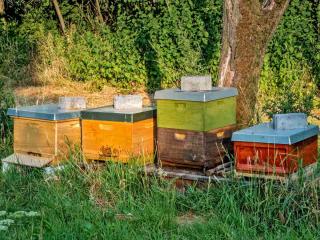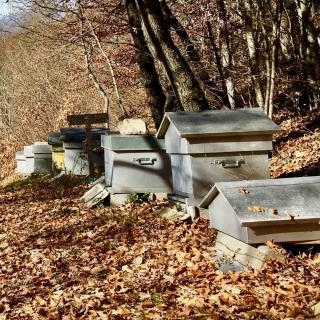

Bees are endangered, in part because of the massive use of pesticides. One thing you can do to protect them is to set up a bee hive in your garden.
Here’s a quick review of current legal requirements to set a hive up, and what the best practices are.
You are allowed to have a beehive in your garden as long as you meet the current legal requirements. These are related to minimum or buffer distances between hive, neighboring houses, public walkways and public buildings.

Check with your local town hall for such zoning issues.
Nothing at national or federal level, either for the UK or for the USA, prohibits individuals from having a beehive in the garden, but local ordinances may restrict this.
If your production is only for family consumption, usually all you have to do is register your hive with a local risk management bureau.
In the UK, the Bees Act of 1980 does include obligations related to bee health. For example, if a disease is killing bees off in your hive, you must report it to local authorities to prevent its spread.
However, if you plan to sell your honey, you’ll need to process papers to register as a formal business. You’ll have to meet food safety requirements. All owners of hives must register every hive yearly, renewing it and always providing a floor plan of where the hive is located. This is sometimes possible over the internet.

A worker bee prefers to forage at distances not further than half a mile (about one kilometer), so better have plants, shrubs and flowers ready to serve nectar and pollen nearby.
Bees often forage up to 3 to 4 miles (4-6 km) from their hives! If there’s a dearth, they can fly even further afield.
– Joanna
The space itself ? Usually, 5 sq. yards (5 sq. meters) is enough for one hive. It must be sheltered from wind and moisture while basking in the sun, especially in the morning. South-East exposure is recommended.
To start, ask other beekeepers in your area if internships, trainings or similar opportunities are organized that will help you learn the trade and tricks: care, hive management, feeding, harvest.
Working with other people is crucial to avoid costly (or stingy!) mistakes.
Sometimes dedicated “training hives” teach how to care for a hive naturally, which is easier because there are less interventions. At the end of winter or at the beginning of spring, you can usually purchase a hive with its colony (counting from 7,000 to 40,000 individual bees).
The hive is moved at night. There are also any number of specialized stores on the Internet that help you find the appropriate equipment: entire hives, frames, smokers, protective clothing…
Fabienne Lisse
this information is incorrect – bees forage up to 3 to 4 MILES from their hives, not half a mile! If there’s a dearth, they can fly even further afield. And strictly speaking, it should correctly be written as honey bee (not honeybee) – it is two words. Same as Bumble Bee (not Bumblebee). This follows the common names specified by the Entomological Society of America (2021a. (2021a).
Hi Joanna! Thank you very much for your message. I clarified in the article the normal foraging distance for bees and also changed the name from honeybee to honey bee; it’s still quite common to see the one-word spelling.
I also added more information regarding regulation. Thanks for having left a comment, it was very helpful and nice of you.
Hi.i would love to start a behive in my garden,the cheapest way possible and i have no experience 🤐
Hi Alan! That’s an excellent project. Personally, I’ve started a training to do exactly that. It’s actually an important thing to do, even before buying and purchasing anything.
The cheapest way to start is thus to learn about it. Otherwise, you might make mistakes that will cost you more in the end.
For example, buying a queen bee with a small portion of her normal workers will already cost 50£. But if the hive you prepared for it isn’t right, it’ll leave and disappear into thin air.
Secondly, there are some regulations that must be complied with. Local regulations on where to place the hive, and national regulations regarding insurance and hive registration.
So my first tip would be to help you look up good gardening groups that provide trainings nearby, if you’d like to share where you live.